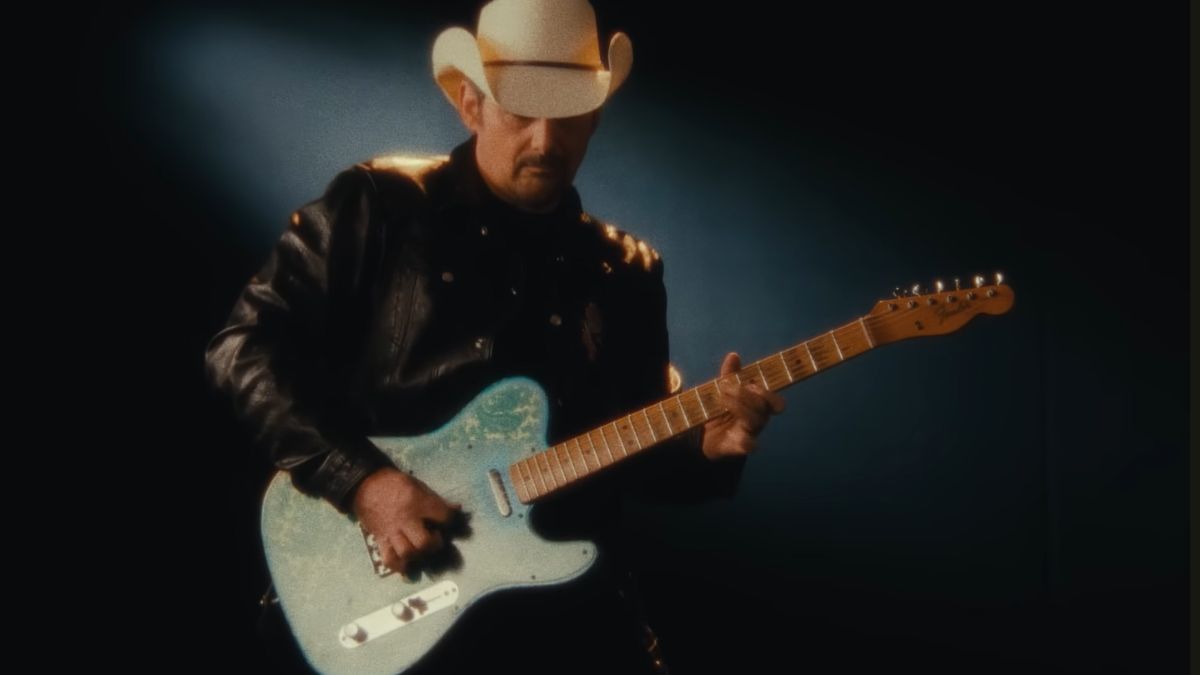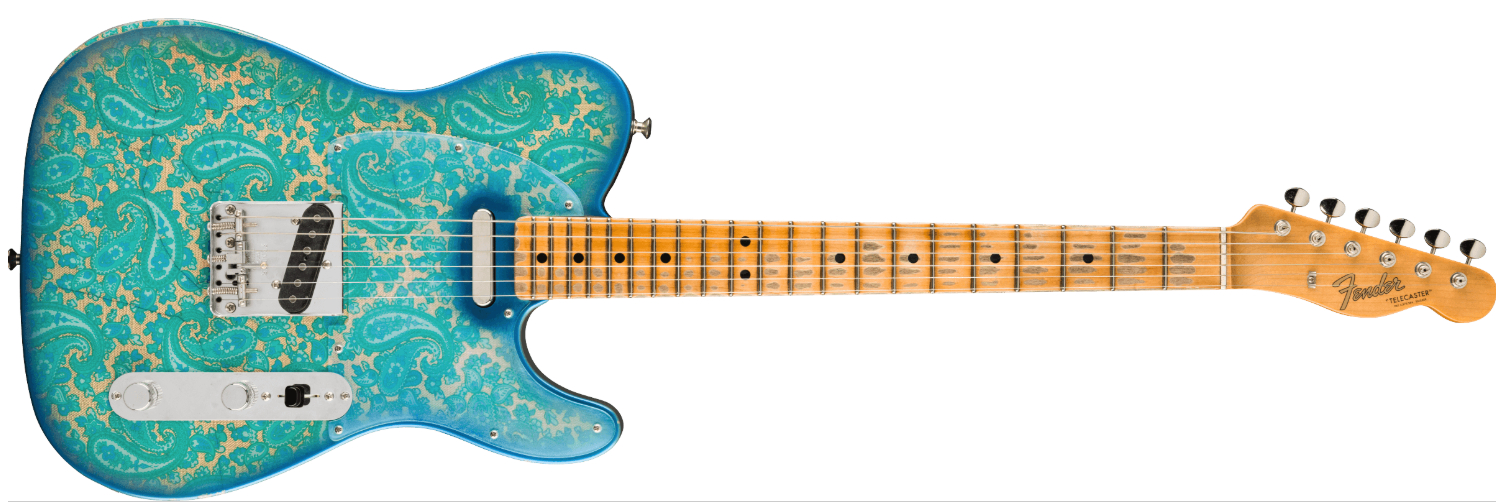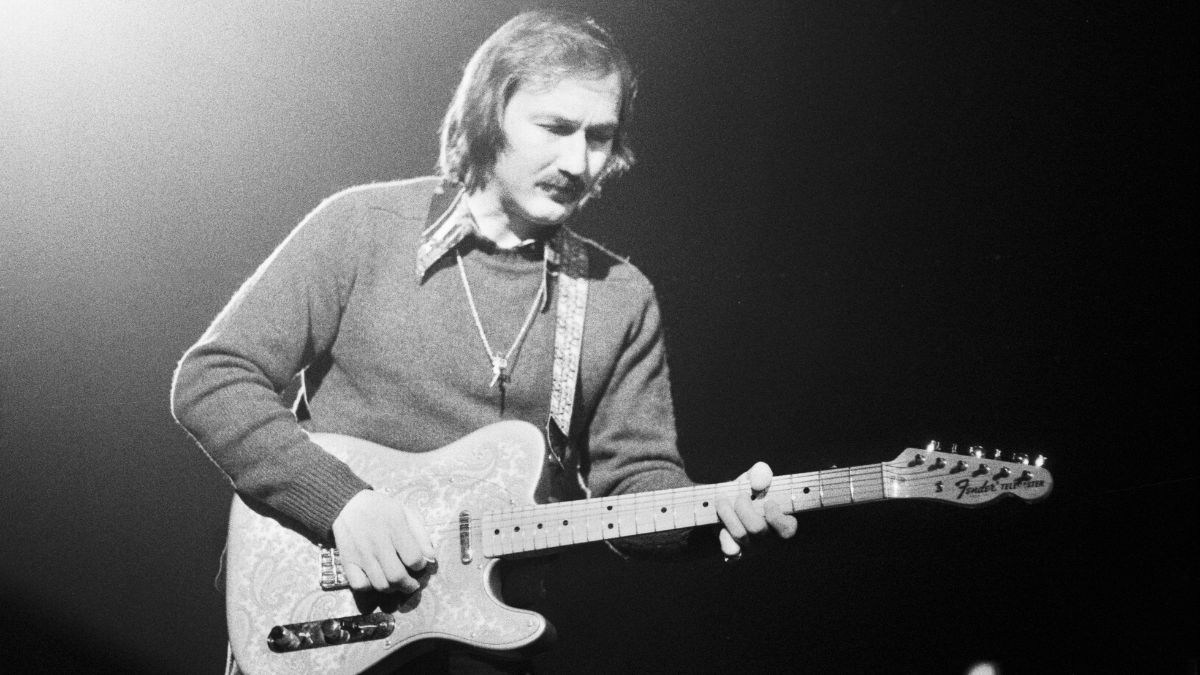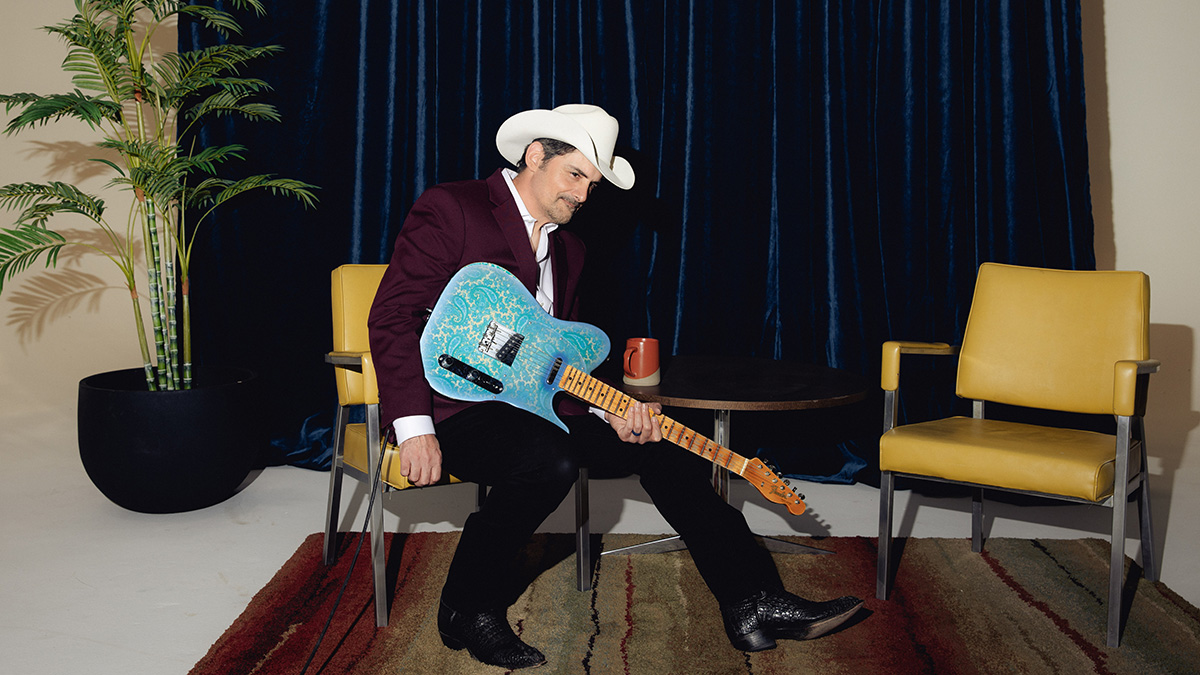“They looked at me like they had seen a ghost. They were like, ‘We’ve got to make this for people’”: Brad Paisley’s new signature Telecaster is based on a vintage gem so rare Fender couldn’t believe he had one
The ‘Lost’ Telecaster features an obscure paisley finish that revives a long-forgotten treatment from the late ’60s

When Fender approached celebrated country star and Telecaster aficionado Brad Paisley about making a signature guitar, he was able to bring a long-forgotten, left-field vintage design to the table – and it caught the Big F completely off guard.
After some pretty tireless work behind the scenes, the Limited Edition “Lost Paisley” Telecaster was launched earlier this month, and it revives an extremely short-lived paisley finish from 1968.
Such guitars were designed in response to the Summer of Love counterculture movement that blossomed in that decade. They arrived in Paisley Red and Blue Flower variants, and stood out for their decorative and psychedelic looks, and Cling-Foil paper touches.
Sadly, their days proved to be numbered, partly because of how vulnerable the finish was to flaking. The ill-fated line was discontinued by late 1969 and, as Paisley notes, the original Paisley Teles would have all fallen into complete obscurity if not for the singular taste of one artist in particular .
“It wasn’t until they gave one [of the original Paisley Telecasters] to James Burton that they became cool,” Paisley tells Guitar World in a new interview. “If somebody didn’t have the brilliant idea to send James Burton that guitar, and ask him to play it, they’d all be gone. They would have gone the way of so many failed experiments in music.”
Burton was gifted a Red Paisley model in 1969 and would play it religiously over the next two decades, on stages with everyone from Elvis Presley to Jerry Lee Lewis, and Roy Orbison. Sure, he made some modifications along the way to keep it fresh – the bridge was swapped out, its neck replaced and the bridge pickup upgraded, too – but it became the guitar he was most synonymous with.
Burton's advocation of the Tele stopped it from disappearing completely. Still, when Paisley himself went to Fender with one of those forgotten models in tow, he caught them off guard.
All the latest guitar news, interviews, lessons, reviews, deals and more, direct to your inbox!
“I walked through the doors, with this thing in a case, sat down with these guys, pulled it out, and said, ‘Let me tell you about this.’ They looked at me like they had seen a ghost,” he relays.
“Fender is run by guitar players and fans now. They get it. They were like, ‘We’ve got to make this for people.’ And what an amazing mindset. They don’t think corporately. They never stopped and said, ‘Will this sell?’”

So, with a license to explore his concept freely, he did just that. The skeleton of the guitar is based on his well-worn 1967 Tele, and it features a ’60s oval C-shaped neck, Seymour Duncan Custom Shop Hand-Wound Lost Paisley pickups, and a Glaser “G” Bender system.
Period-correct touches aplenty bump its price tag up to $7,000, but there is at least a fun twist: 19 models will be personally built by Brad Paisley. Another 67 will be crafted at Fender Custom Shop in Corona, California, but the Paisley-made electric guitars may end up wildly different.

“With the 19 that I make,” he says, “I’m getting the guitar in pieces, and then I’m applying the finish to it myself. I don’t know what the pickups are going to be. I may put one together and go with a Seymour [Duncan pickup] set, or I may put one together and go with a Lindy Fralin in the bridge.
“Fender has standards, I don’t,” he jokes. “I’m going to give birth to 19 of these, and they’re all going to be different.”

Paisley isn’t the only country icon bringing fresh ideas to the Tele world. Keith Urban has been announced as a PRS artist and he’s set Paul Reed Smith to work on a Tele-like design that solves all the problems of his beloved Clarence Tele.
“I can play anything on Clarence; I just wish it sounded a little bit better,” he tells Guitar World. “I want to see if we can create something modeled on the feel of Clarence but with a better tonal range.
“My struggle is I like a little fight out of a guitar,” he adds. “I'm a bit more of an aggressive player. I'm trying to see if I can get Paul to help me get a bit of fight out of a guitar designed to give you no fight and effortless play.”
For more about Paisley finish, his Indiana Jones moment and why he’s building 19 of the guitars himself, read Brad Paisley’s full interview about the Lost Telecaster.
A freelance writer with a penchant for music that gets weird, Phil is a regular contributor to Prog, Guitar World, and Total Guitar magazines and is especially keen on shining a light on unknown artists. Outside of the journalism realm, you can find him writing angular riffs in progressive metal band, Prognosis, in which he slings an 8-string Strandberg Boden Original, churning that low string through a variety of tunings. He's also a published author and is currently penning his debut novel which chucks fantasy, mythology and humanity into a great big melting pot.
You must confirm your public display name before commenting
Please logout and then login again, you will then be prompted to enter your display name.


![[LEFT] 1966 EMS-1235 with full-scale four-string tenor neck and eight-string mandolin neck. Right: 1961 EMS-1235 with a regular six-string neck and an octave six-string neck.](https://cdn.mos.cms.futurecdn.net/FDaNJGFxekS6EH9te5oeuf.jpg)